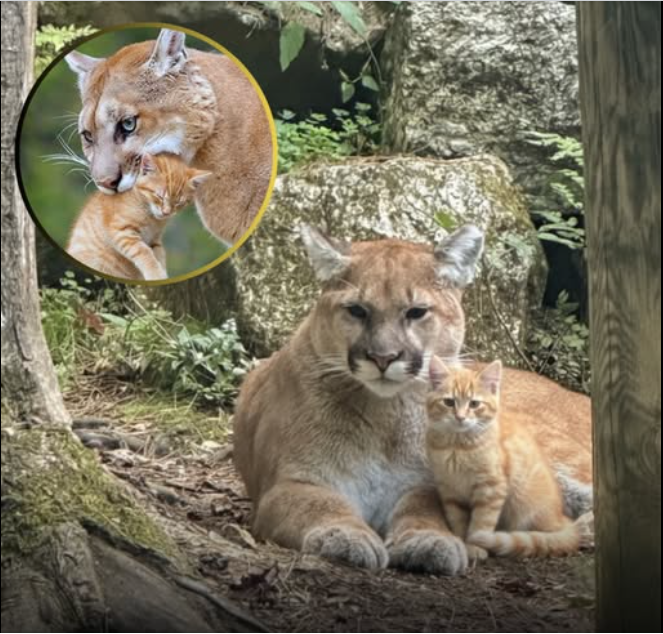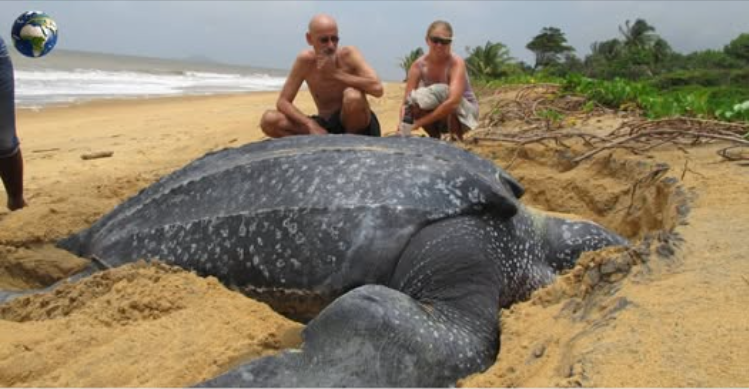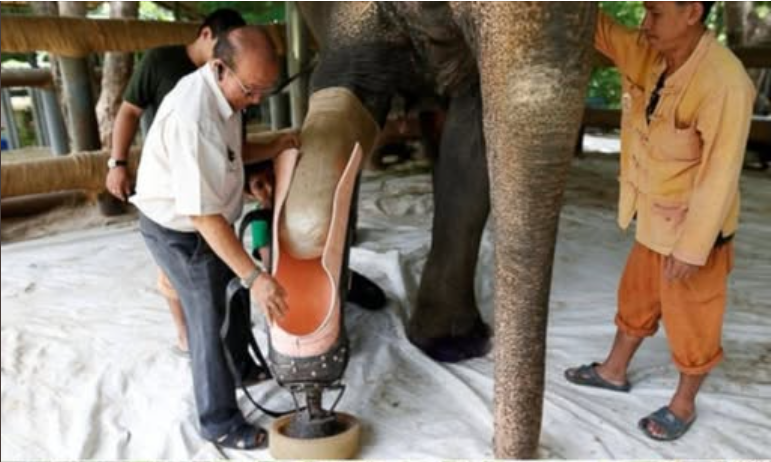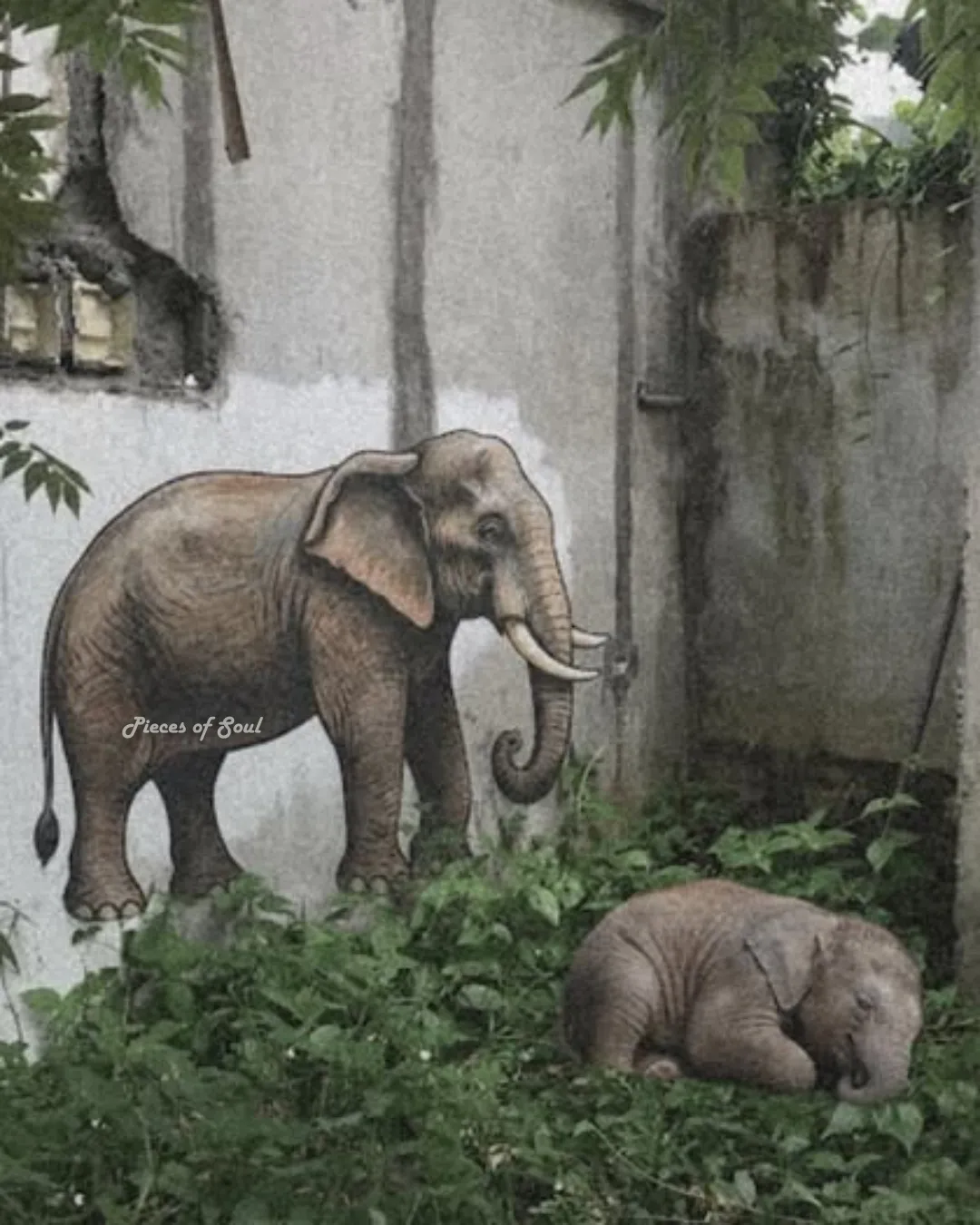
Wildlife photographer Ethan Morales was deep within the California hills, digital camera in hand, monitoring a feminine mountain lion he’d been observing for weeks. He known as her Sierra—robust, stealthy, and fiercely protecting of her territory.
One chilly daybreak, Ethan noticed motion close to the sting of a small rural neighborhood. He steadied his lens, anticipating to seize Sierra’s silhouette in opposition to the rising solar. However then—one thing sudden. A tiny orange home cat wandered out from underneath a porch, tail flicking curiously.

To Ethan’s astonishment, Sierra didn’t [at.ta.ck]. As an alternative, she crouched low, ears perked, and set free a mushy chuffing sound—the identical one she used along with her cubs. The home cat meowed again, utterly unaware of the [da.ng.er] — or the [co.nfu.sion]. For a couple of surreal moments, the mountain lion circled the cat gently, sniffing, her large head reducing as if to nudge it.

Ethan clicked his digital camera quickly, coronary heart pounding. He captured a sequence so tender and weird it could later go viral—the majestic predator mistaking a home cat for her misplaced cub.
That’s about to turn into essentially the most [te.rrify.ing] orange cat ever born…
Animals by no means mistake one other species younger’in’s for their very own. That cat was adopted by that mountain lion and that’s that — A cub is a cub.
SHARE this Valuable story together with your family and friends!💕







 wholesome Secure Life
wholesome Secure Life  Aameen
Aameen




























